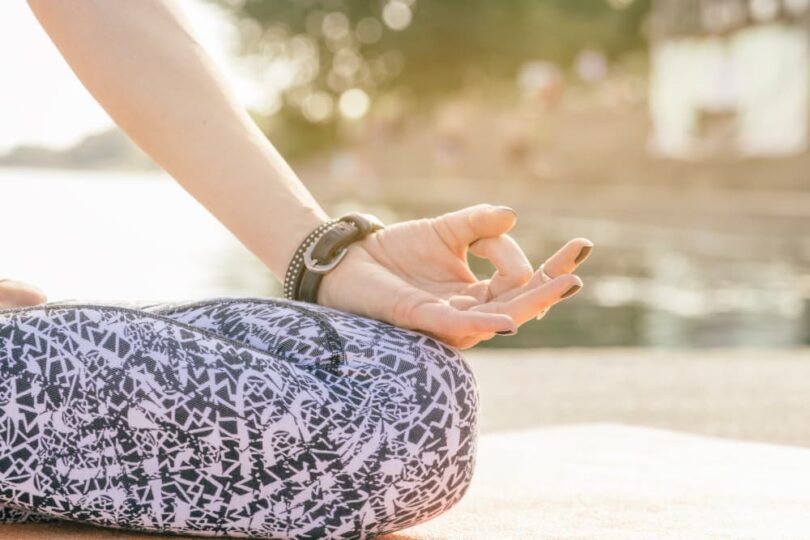Table of Contents
Introduction
In today’s fast-paced world, mental health issues have become increasingly prevalent. People are searching for effective ways to improve their psychological well-being without relying solely on medication. This is where yoga comes into play. Yoga for mental health is a holistic approach that integrates physical postures, breath control, and meditation to promote mental clarity and emotional stability. In this article, we’ll dive into the myriad benefits of yoga for mental health, explore specific poses, and provide practical tips for incorporating yoga into your daily routine.
What is Yoga?
Yoga, an ancient practice that originated in India, involves a series of physical postures, breath control techniques, and meditation. It’s more than just a workout; it’s a mind-body practice that can bring about profound mental peace and clarity. Many people turn to yoga to help with stress relief, anxiety management, and overall mental wellness.
The Connection Between Yoga and Mental Health
Yoga’s impact on mental health is well-documented. It’s known for reducing stress, anxiety, and depression while promoting a sense of calm and well-being. The practice encourages mindfulness and self-awareness, which are crucial for maintaining good mental health.
Importance of Mental Health
Mental health is just as important as physical health. It affects how we think, feel, and act in our daily lives. Good mental health helps us handle stress, build healthy relationships, and make sound decisions. Incorporating yoga into your routine can be a significant step towards achieving optimal mental health.
Benefits of Yoga for Mental Health
Stress Reduction
Yoga is widely known for its ability to reduce stress. Combining physical postures, controlled breathing, and meditation helps lower cortisol levels, the body’s primary stress hormone. Regular yoga can create a calming effect that lasts long after the session ends. For more detailed information on how yoga reduces stress, you can refer to Harvard Health’s article on Yoga for better mental health.
Anxiety Relief
Practicing yoga can significantly alleviate symptoms of anxiety. Poses focusing on deep breathing and mindfulness can help ground the individual, making them feel more connected to the present moment and less overwhelmed by anxious thoughts. For example, the Child’s Pose and Legs Up the Wall reduce anxiety.
Depression Management
Yoga can also be an effective tool for managing depression. The physical activity involved in yoga releases endorphins, the body’s natural mood lifters. Furthermore, certain poses and breathing exercises are specifically designed to help balance the body’s energy and mood.
Improvement in Mood
Regular yoga practice can improve your overall mood. Yoga’s mindfulness aspect teaches you to live in the moment, which can help cultivate a more positive outlook on life.
Enhanced Mental Clarity and Focus
Yoga is beneficial for emotional well-being and sharpens mental clarity and focus. Its meditative practices help clear the mind of distractions, leading to better concentration and cognitive function.
Yoga Poses for Mental Health
Child’s Pose (Balasana)
Child’s Pose is a simple yet powerful pose that helps calm the mind and relieve stress. It involves sitting back on your heels, stretching your arms forward, and resting your forehead on the mat. This pose encourages deep breathing, which helps reduce tension and promote relaxation.
Cat-Cow Pose (Marjaryasana-Bitilasana)
The Cat-Cow Pose is a gentle flow between two poses that warms the body and brings flexibility to the spine. This sequence is excellent for reducing stress and increasing emotional balance. It involves arching your back like a cat and then dipping your belly like a cow, synchronizing these movements with your breath.
Easy Pose (Sukhasana)
Easy Pose is a simple cross-legged sitting position that promotes mental clarity and focus. This pose is often used for meditation and breathing exercises. It helps in grounding the mind and bringing a sense of inner peace.
Bound Angle Pose (Baddha Konasana)
The Bound Angle Pose is a seated pose where the soles of the feet are brought together, and the knees are allowed to drop open. This pose opens the hips and promotes relaxation. It’s particularly beneficial for relieving symptoms of anxiety and depression.
Bridge Pose (Setu Bandhasana)
Bridge Pose is a backbend that stretches the chest, neck, and spine. It helps in reducing anxiety, fatigue, and insomnia. By lifting the hips towards the sky while keeping the feet and shoulders grounded, this pose provides a gentle yet effective way to calm the mind.
Legs Up the Wall (Viparita Karani)
Legs Up the Wall is a restorative pose that helps alleviate anxiety and promotes relaxation. It involves lying on your back with your legs extended up against a wall. This pose is great for calming the nervous system and reducing stress.
Corpse Pose (Savasana)
Corpse Pose is typically performed at the end of a yoga session. It involves lying flat on your back with your arms and legs relaxed. This pose encourages deep relaxation and helps integrate the benefits of the yoga practice into the mind and body.
Alternate Nostril Breathing (Nadi Shodhana)
Alternate Nostril Breathing is a pranayama (breathing) technique that balances the left and right hemispheres of the brain. It involves closing one nostril while inhaling and exhaling through the other. This technique is effective for reducing anxiety and promoting mental clarity.
Scientific Studies and Evidence
Studies Supporting Yoga for Mental Health
Numerous studies have highlighted the benefits of yoga for mental health. Research shows that regular yoga practice can significantly reduce symptoms of stress, anxiety, and depression. According to a study published in the Journal of Psychiatric Practice, yoga can be as effective as cognitive-behavioral therapy for reducing symptoms of anxiety and depression.
Comparisons with Other Treatments
When compared to other treatments, such as medication and traditional psychotherapy, yoga stands out for its holistic approach. A study published in The Journal of Alternative and Complementary Medicine found that yoga could be a viable alternative to medication for some patients, offering similar benefits without the side effects. This is particularly significant for individuals looking for non-pharmacological options.
Long-term Benefits
The benefits of yoga are not just short-lived; they extend into the long term as well. Research conducted by the National Institutes of Health found that individuals who practiced yoga regularly over several years experienced sustained improvements in mental health. This includes better stress management, reduced symptoms of depression and anxiety, and improved overall mood.
Physiological Mechanisms
Yoga’s impact on mental health can also be explained through its physiological effects. Practices such as deep breathing and meditation help regulate the autonomic nervous system, reducing the fight-or-flight response and promoting relaxation. Moreover, yoga increases the production of gamma-aminobutyric acid (GABA), a neurotransmitter associated with reducing anxiety and improving mood.
Case Studies and Clinical Trials
Several case studies and clinical trials support the effectiveness of yoga for mental health. For example, a study conducted by Harvard Medical School found that participants who practiced yoga for 12 weeks showed significant improvements in their mental health scores compared to those who did not practice yoga. Another study highlighted in NCBI’s article confirms these findings, emphasizing yoga’s role in improving overall mental well-being.
Practical Tips for Incorporating Yoga into Daily Life
Creating a Yoga Routine
Starting a yoga routine doesn’t have to be complicated. Begin by setting aside a specific time each day for your practice. Morning or evening sessions can be particularly beneficial. Aim for at least 20-30 minutes to start. Consistency is key, so try to stick to your schedule, even on busy days.
Choosing the Right Type of Yoga
With various types of yoga available, it’s essential to find one that suits your needs and preferences. Hatha yoga is excellent for beginners due to its slower pace and focus on basic poses. If you’re looking for something more vigorous, Vinyasa or Ashtanga might be more suitable. For those seeking deep relaxation, Yin yoga or Restorative yoga can be highly effective.
Finding a Qualified Instructor
A qualified yoga instructor can guide you through the poses and ensure you’re practicing safely. Look for instructors with certifications from recognized yoga organizations. Many gyms and yoga studios offer beginner classes, which can be a great place to start. Online classes are also a good option, providing flexibility and convenience.
Setting Up a Comfortable Space
Create a dedicated space for your yoga practice at home. It doesn’t need to be large, just quiet and free from distractions. A yoga mat, some comfortable clothing, and perhaps a few props like blocks or straps can help enhance your practice. A peaceful environment can make your sessions more enjoyable and effective.
Integrating Yoga into Your Daily Activities
You don’t need to be on a mat to practice yoga. Incorporate mindfulness and deep breathing into your daily activities. For example, take a few deep breaths before starting your workday or practice a simple stretch during a break. These small practices can significantly contribute to your mental health over time.
Staying Motivated
Staying motivated can be challenging, especially when starting. Set small, achievable goals and celebrate your progress. Joining a yoga community in person or online can also provide support and encouragement. Remember, yoga is a journey, not a destination, so be patient with yourself.
Listening to Your Body
Finally, always listen to your body. Yoga is about finding balance and harmony within yourself. If a pose feels uncomfortable or painful, modify it or skip it. The goal is to support your mental and physical well-being, so practice with kindness and awareness.
Related Article: Meditation Bench – A Guide to Finding Your Inner Peace
Conclusion
Incorporating yoga for mental health into your daily routine can profoundly affect your well-being. Through a combination of physical postures, breath control, and meditation, yoga offers a holistic approach to reducing stress, alleviating anxiety, and managing depression. The scientific evidence supporting these benefits is compelling, making yoga a viable option for those seeking to improve their mental health naturally.
Creating a consistent yoga routine, choosing the right type of yoga, and setting up a comfortable space can make this practice a rewarding part of your life. Listening to your body and staying motivated are key to a successful yoga practice. Whether you’re a beginner or an experienced yogi, the journey of practicing yoga can bring peace, clarity, and emotional balance.
So, take a deep breath, roll out your mat, and start experiencing yoga’s mental health benefits today. Remember, every small step on this path contributes to your overall well-being. Namaste.







